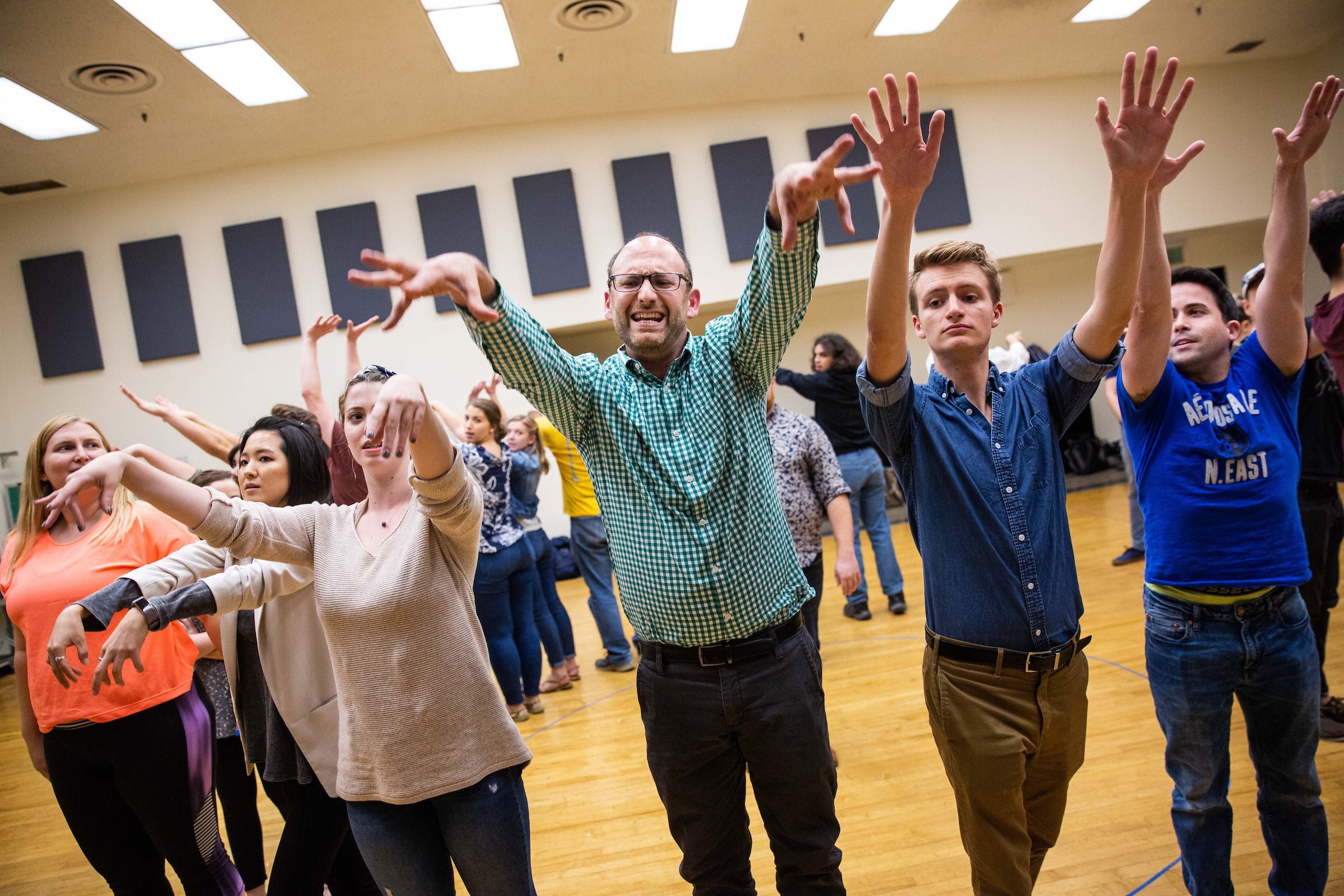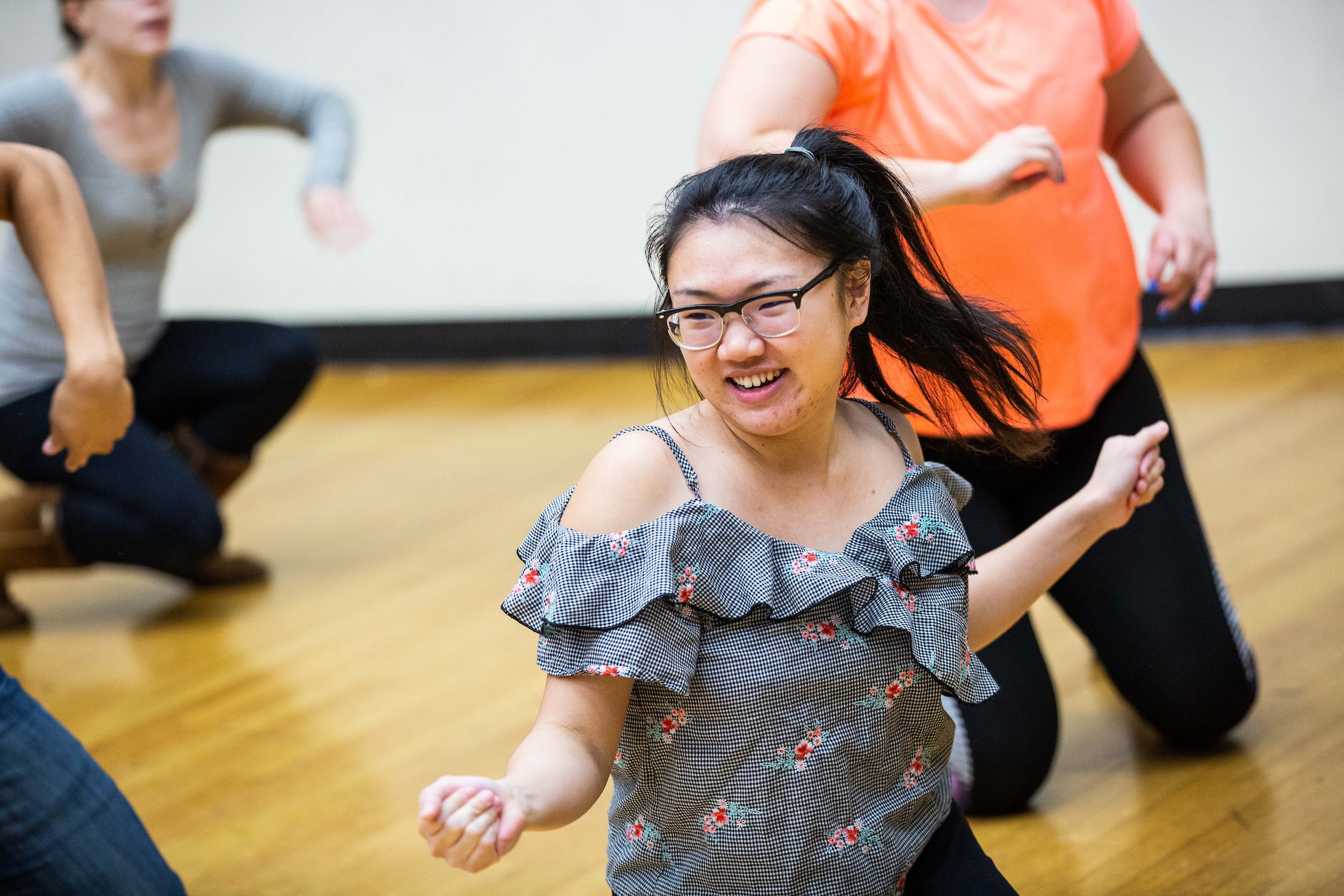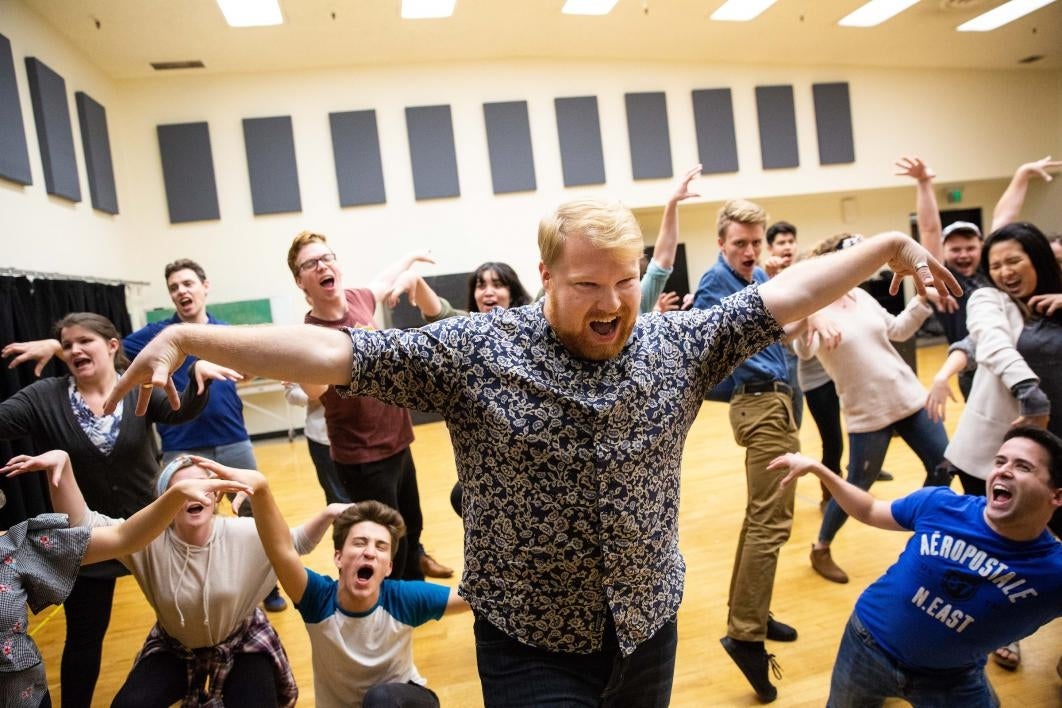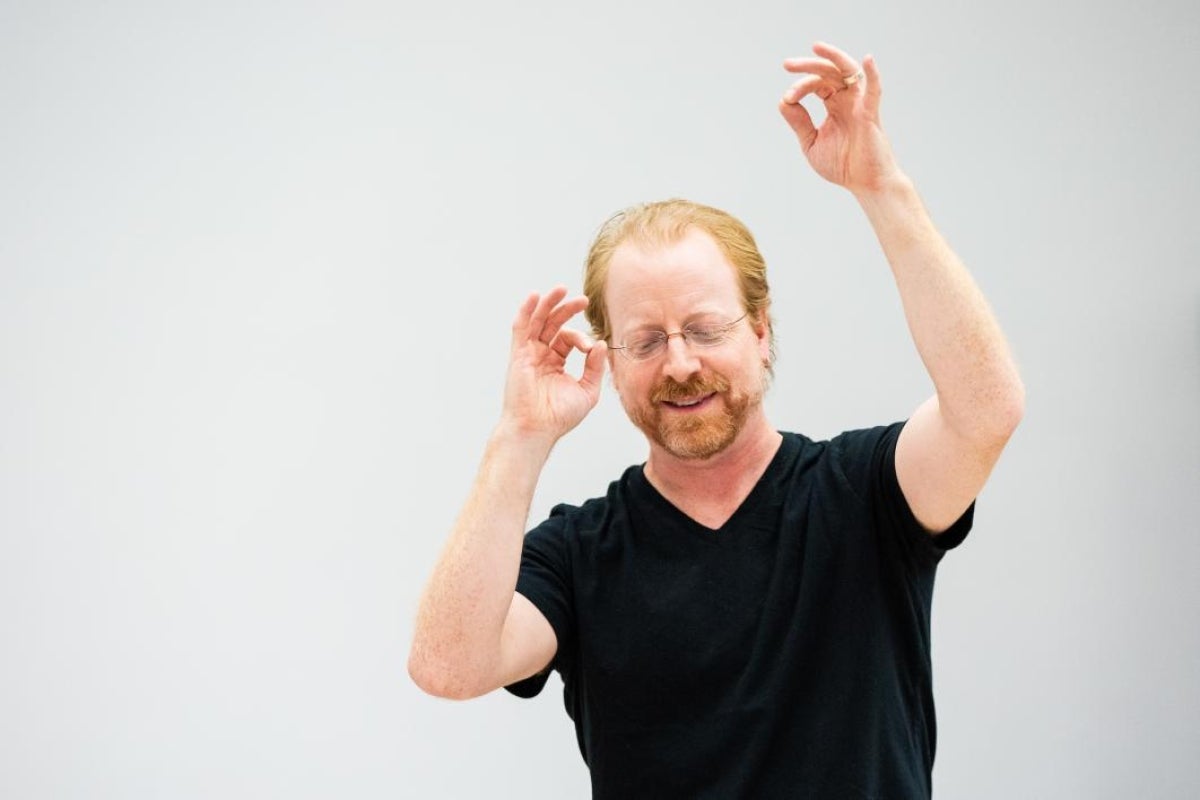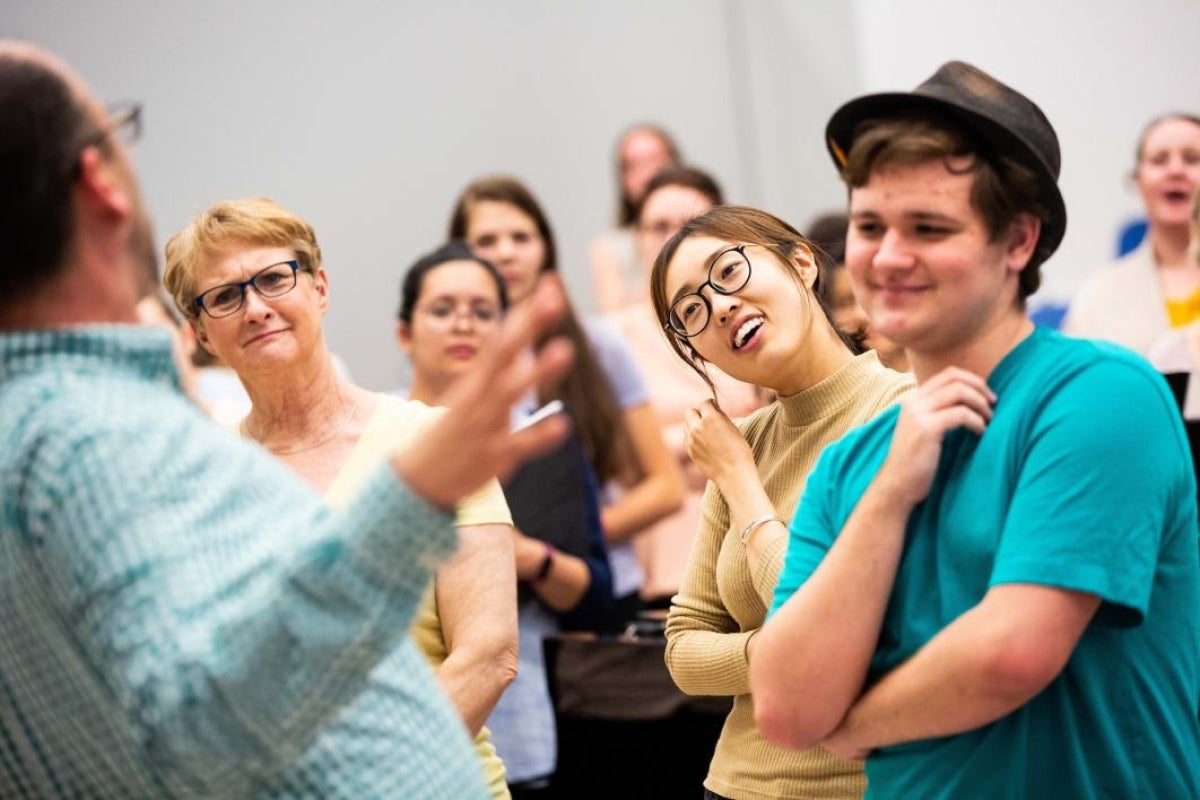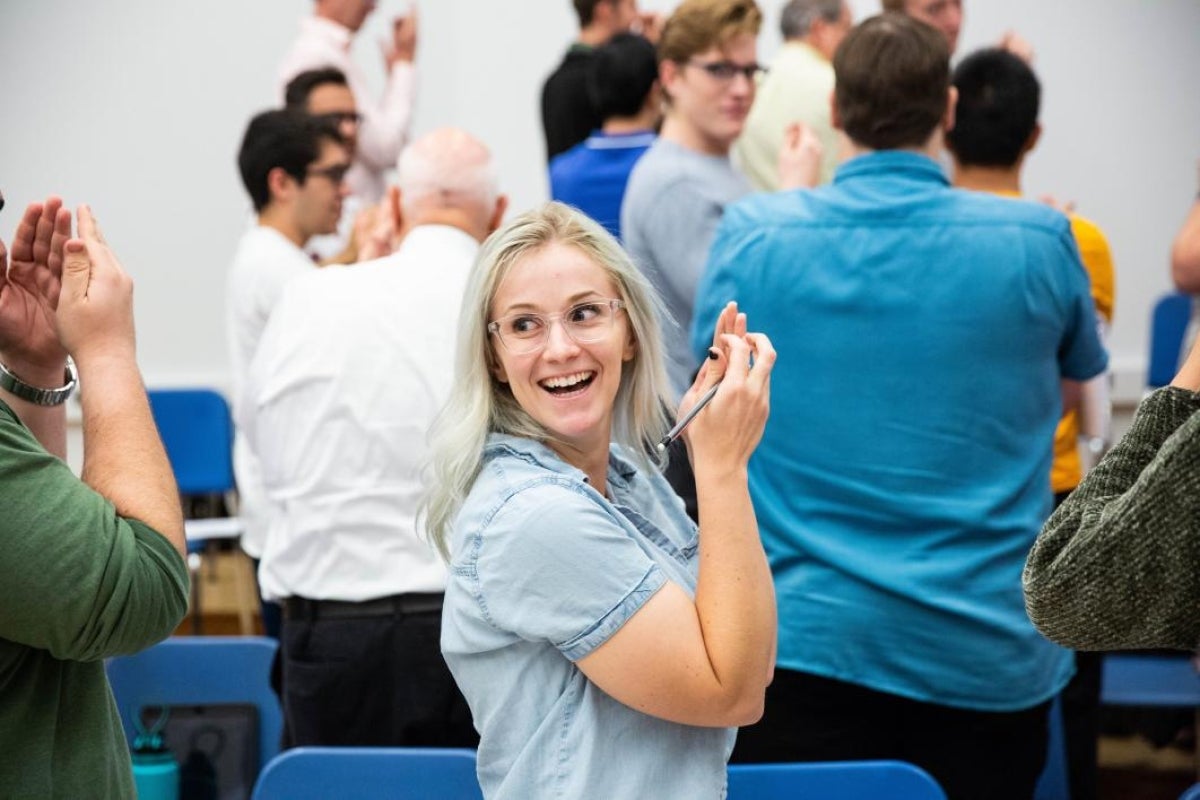ASU to fully stage the controversial, elaborate 'Mass' by Leonard Bernstein

The United States was polarized, reeling from violence, its citizens protesting their leaders and questioning the very foundations of the country.
It was 1971.
That year, an audacious and wholly unique artwork debuted at the opening of the Kennedy Center for the Performing Arts; it was so controversial that President Richard Nixon stayed away from the performance.
“Mass: A Theater Piece for Singers, Players and Dancers” — which uses the Roman Catholic Mass as a framework to explore the cultural crisis of the late 1960s and early 1970s — was created by Leonard Bernstein, one of America’s greatest composers.
The piece included hundreds of performers, overlapping singing voices, cacophonous musical passages and moments of confusion. There had been nothing like it.
And now “Mass” is getting a rare, fully staged presentation in two shows at Arizona State University this weekend to mark the centennial of Bernstein’s birth.
“Mass” will include nearly 300 people on stage at ASU Gammage, including four dance groups, the Phoenix Boys Choir, a rock band, a blues band, a marching band and renowned baritone and guest artist Jubilant Sykes in the lead role of the Celebrant. There are another 100 designers, artists and crew members bringing the show to life.
Students surround stage director David Lefkowich (center) as they rehearse stage direction and singing for "Mass" at the Evelyn Smith Music Theatre building Nov. 5. Photo by Deanna Dent/ASU Now
“Mass” has been performed many times this year, but even big-city productions have not been fully staged, according to David Lefkowich, the stage director.
“With this piece, we have an obligation to make it as spectacular as possible,” he said.
“The combined efforts of ASU are going to be on that stage and you’ll see exactly how powerful and how incredible this school is. Almost everyone comes from here except me, the Phoenix Boys Choir and Jubilant Sykes,” said Lefkowich, a New York-based stage director and choreographer.
“I’ve worked at a lot of universities and I don’t know any university that could even attempt something like this, let alone pull it off the way ASU is doing.”
The performers will include the ASU Symphony Orchestra and Choirs, ASU Music Theatre and Opera and dancers and designers from the School of Film, Dance and Theatre in the Herberger Institute for Design and the Arts.
“The scope and scale of ‘Mass’ can best be realized in a setting like the Herberger Institute, given the culture of collaboration and the broad talents of the faculty and students,” said Brian DeMaris, artistic director of ASU’s Music Theatre and Opera program.
“It is a work that showcases all we do and how we, as artists, intersect with current issues.”
Senior music theater student Erin Kong rehearses "Mass" by Leonard Bernstein, which will performed Nov. 17 and 18 at ASU Gammage. Photo by Deanna Dent/ASU Now
Many people know Bernstein as the composer of the score to the Broadway show “West Side Story.” A decade after the movie version, Bernstein wrote “Mass” at the request of Jacqueline Kennedy Onassis in honor of John F. Kennedy, the nation’s first Catholic president. Bernstein worked on it during the Vietnam War, the assassinations of Robert Kennedy and Martin Luther King Jr. and the killing of four young protesters at Kent State University.
Lefkowich had not liked “Mass” when he first heard it years ago, but after he was asked to direct it at ASU, he realized the themes of disconnection and faithFor the text of “Mass,” Bernstein collaborated with Stephen Schwartz, who had created “Godspell,” a musical based on the Gospel of St. Matthew. are relevant today.
“I had a roommate who loved it and would put it on, and I would say, ‘Please turn this mess off. I don’t want to hear this,’" he said.
“We’re in a time period where not much has actually changed from 1971 and the premiere. We don’t have the Vietnam War, but we’re grappling with our identity and the role of religion.”
Lefkowich has given the staging a contemporary feel, in part by incorporating projections. As they arrive, the audience sees a starscape projected on stage, but each star is actually a social-media bubble.
“In the first number, ‘Kyrie Eleison,’ the social media starts to intensify, and it gets more and more crazy and the images start to go by quicker and the Celebrant comes into that,” he said.
“You see him overwhelmed by this tidal wave of social media, and then he just pauses it and he sings that beautiful ‘Simple Song.’ And the audience goes, ‘Oh, this is not a 1971 idea. This speaks to right now.’"
Not only will the audience see themes from modern life in the show, they’ll become part of it. Lefkowich designed the production to take in the audience at the end.
“I often ask my audience to sit back, relax and let the music wash over them. But in this piece, you can’t,” he said.
By the end of “Mass,” the performers are out among the audience, who will be on their feet, joining in — something he thinks they really want to do anyway.
“We want to take a picture of ourselves, tag our friends, put it on social media and say ‘Look at what I just did. I did something unique,’" he said.
A staging of this magnitude is complicated, as dozens of performers are entering and exiting the stage. In addition, even though the performers have been working on their parts since the summer, only two rehearsals will include everyone.
“As a director, I’m excited by the challenge. As a human, I have a lot of anxiety,” he said.
“Mass” will likely be a once-in-a-lifetime experience for everyone.
“What’s exciting about the ASU production is that you will see everything that Bernstein has asked for,” he said.
“This is not a piece that comes along very often, and there’s not anything else like it — so for anyone who thinks ‘I’ll catch the next one,’ you can’t.”
Find performance and ticket information on ASU Events.
Top photo: Choir members lift up their arms at the Evelyn Smith Music Theatre on Nov. 5 during rehearsals for "Mass," which will include more than 400 singers, dancers, musicians, designers, artists and crew members in two performances this weekend. Photo by Deanna Dent/ASU Now
Lynne MacDonald, communications specialist for the School of Music, contributed to this story.
More Law, journalism and politics

ASU experts share insights on gender equality across the globe
International Women’s Day has its roots in the American labor movement. In 1908, 15,000 women in New York City marched to protest against dangerous working conditions, better pay and the right to…

ASU Law to offer its JD part time and online, addressing critical legal shortages and public service
The Sandra Day O’Connor College of Law at Arizona State University, ranked 15th among the nation’s top public law schools, announced today a new part-time and fully online option for its juris doctor…

ASU launches nonpartisan Institute of Politics to inspire future public service leaders
Former Republican presidential nominee and Arizona native Barry Goldwater once wrote, "We have forgotten that a society progresses only to the extent that it produces leaders that are capable of…


